| |
|
Bredfield is one
of the largish pleasant villages to the north-west of
Woodbridge. I remember cycling through here one summer
evening in the first year of the millennium, and seeing
men and women in grey and white wandering down to the
bowling green for a match against another village.
Blackbirds were singing, and the sun was low in the sky
behind St Andrew, dappling the restless leaves above the
churchyard. It was the end of a long day's bike ride, and
it felt the perfect place to be.
I'd first come here about five years previously. This was
one of the very first churches I visited on my journey
around the county. I came into the church to find one of
the PCC checking a survey on behalf of the historic
buildings commission. They wanted to know if the
surviving remnants of the canopy of honour to the rood
were still in situ. And so they were - rather faint now,
but under the lovely roof you can still make out the IHS
and AMR monograms. There's another memorable roof in the
porch, a tiny hammerbeam roof of the late 15th century.
You never know what to expect when you step into a
church, even if you have been there before, and on
another occasion I was surprised to hear a rich tenor
voice intoning an old Irish song as I turned the handle
and opened the door. He stood under the chancel arch, and
the words tumbled and filled the tight little nave,
echoing for a split second and then dying swiftly. It was
enchanting. I stood still, not wanting to break the
spell. He came to the end of the verse, noticed me and
the silence fell again like dusty light from the windows.
We chatted for a few moments about the church, and then
he was gone in a hurry. I don't know who he was.
Diocesan architect Richard Phipson was very thorough
here, and the result was a fairly gloomy ritualist
interior that spoke more of the end of the 19th Century
than any other time. This was alleviated somewhat by a
mid-20th Century refurnishing at the hands of Eric
Sandon, who lived in the village, and Basil Hatcher, best
known for the rebuilding of Chelmondiston church after
its destruction by a V2 rocket. And there are a couple of
interesting earlier survivals, most notably a set of
brasses to the Farrington family reset on the north wall.
Unfortunately that have been polished within an inch of
their lives, so come and see them while you can.
Contemporary with Phipson's restoration is a charming set
of four of the Works of Mercy set in a window on the
south side of the nave, looking the work of Hardman &
Co.
Pressed plate
memorials were very popular in the early years of the
20th Century, and there is a good one here to Joseph and
Emily Lachlan White depicting angels sounding the last
trump as Emily is resurrected from the dead on the Day of
Judgment. Good old 17th Century sentiments, and
interesting to see them in an Arts and Crafts idiom,
probably the work of Powell & Sons.
Bredfield's most famous son was the poet Edward
Fitzgerald. Although more usually associated with
neighbouring Boulge, where he is buried, he spent his
childhood years here. His great friend was the Rector of
Bredfield, George Crabbe, the son of another famous poet.
Crabbe's memorial is set in the sanctuary wall. But what
most people will remember Bredfield for is neither
Fitzgerald or Crabbe, but for the elaborate wrought-iron
canopy over the village pump, with charming finger-signs
to neighbouring villages. It recalls the workshop in the
village which produced gates and railings for Big Houses
all over East Anglia.
Simon
Knott, February 2020
Follow these journeys as they happen at Last Of England
Twitter.
 
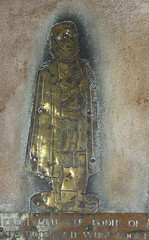 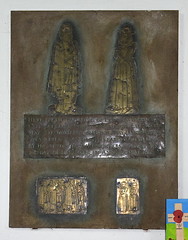 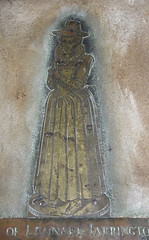 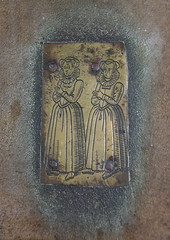
 
   
 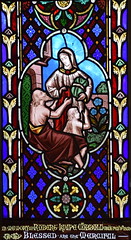 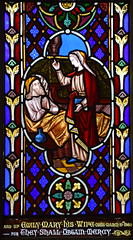 
Amazon commission helps cover the running
costs of this site
|
|
|

